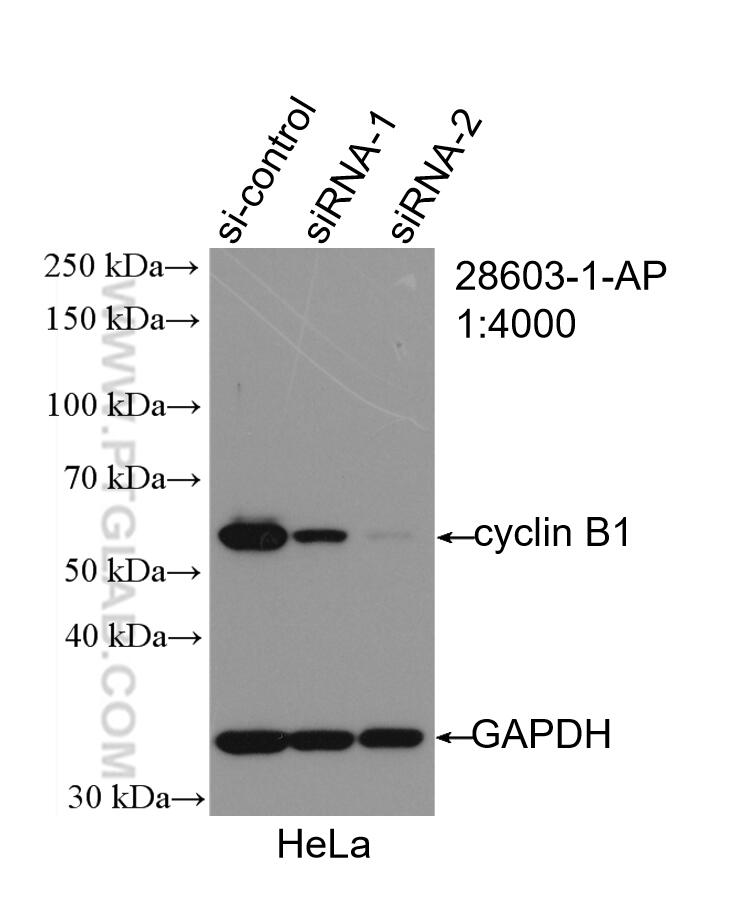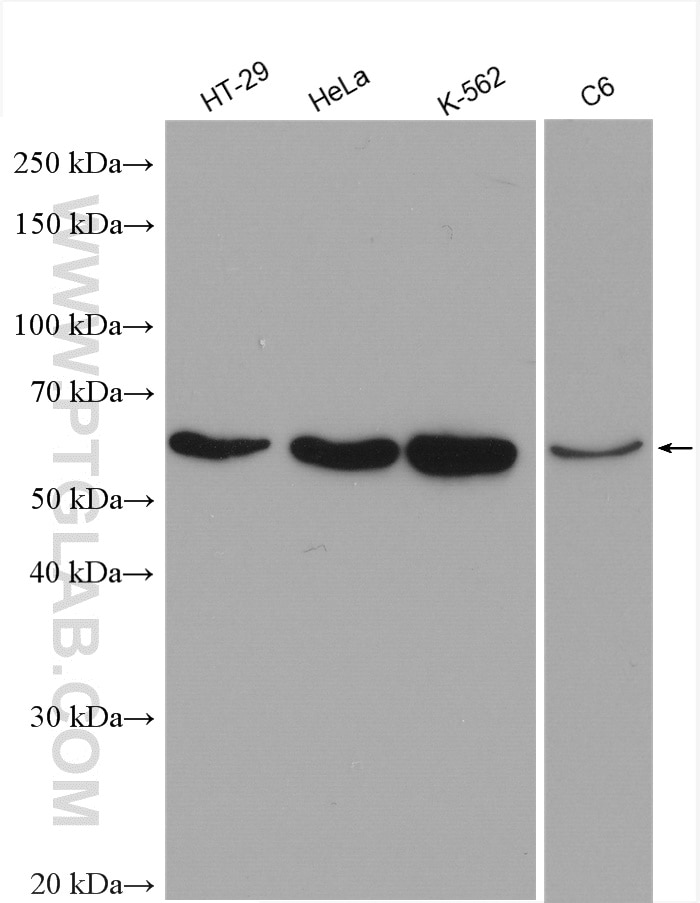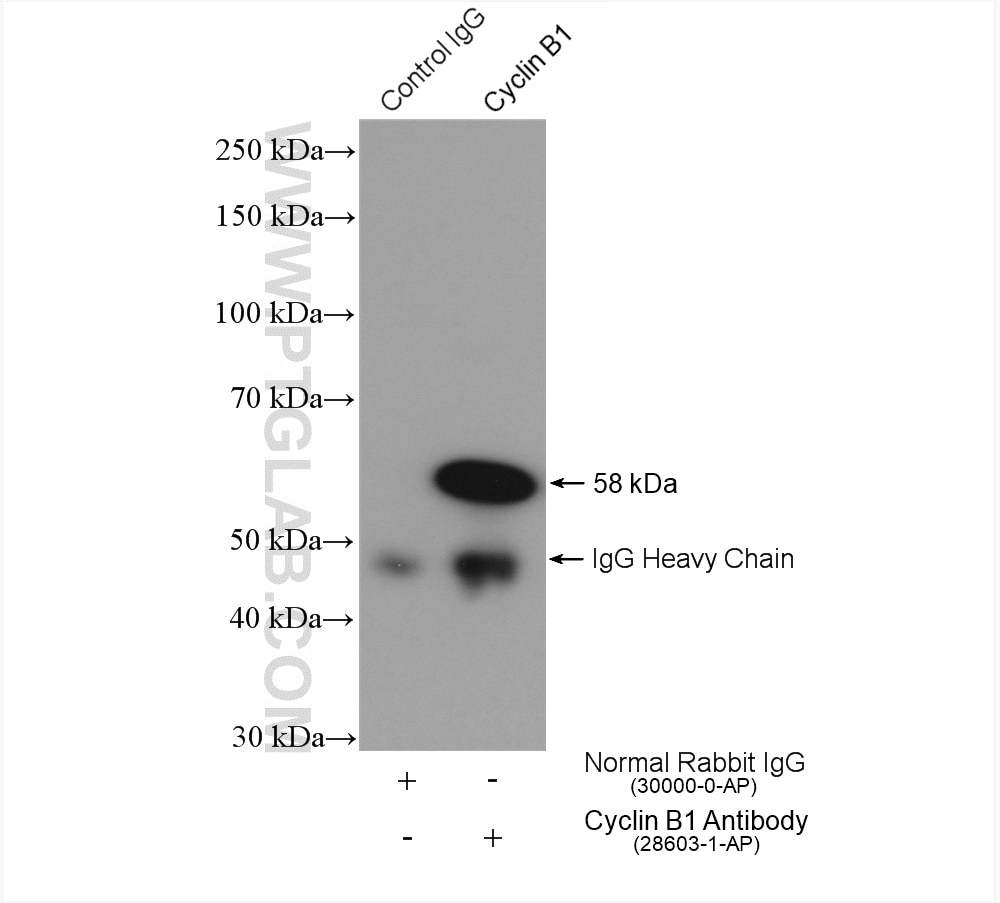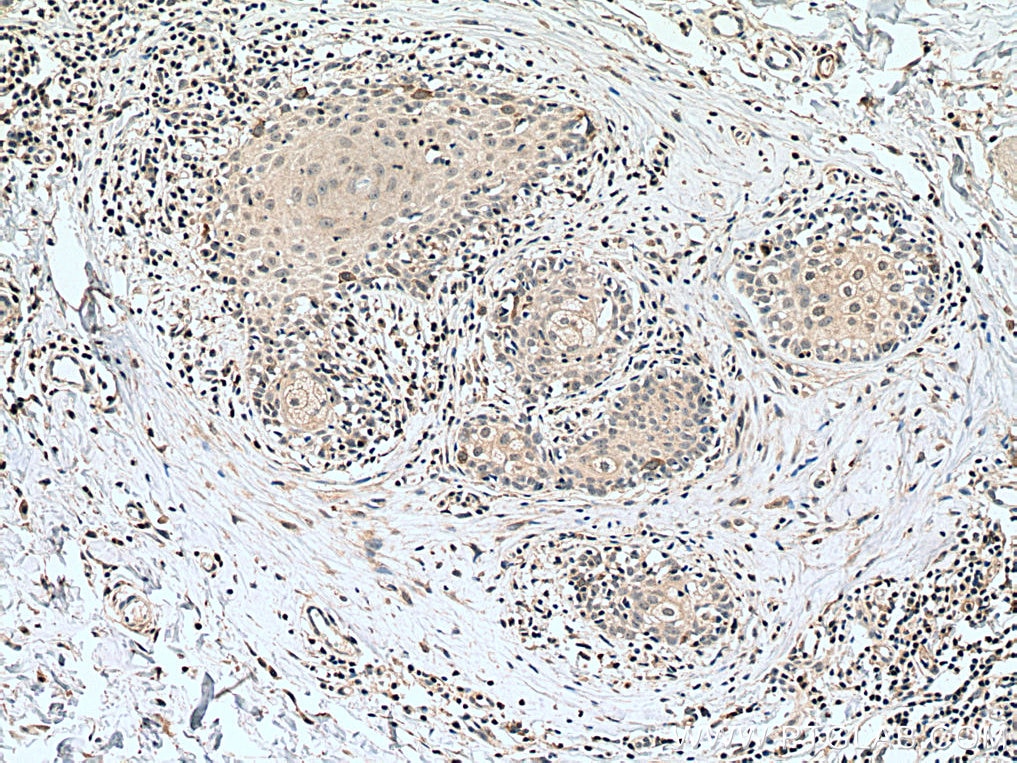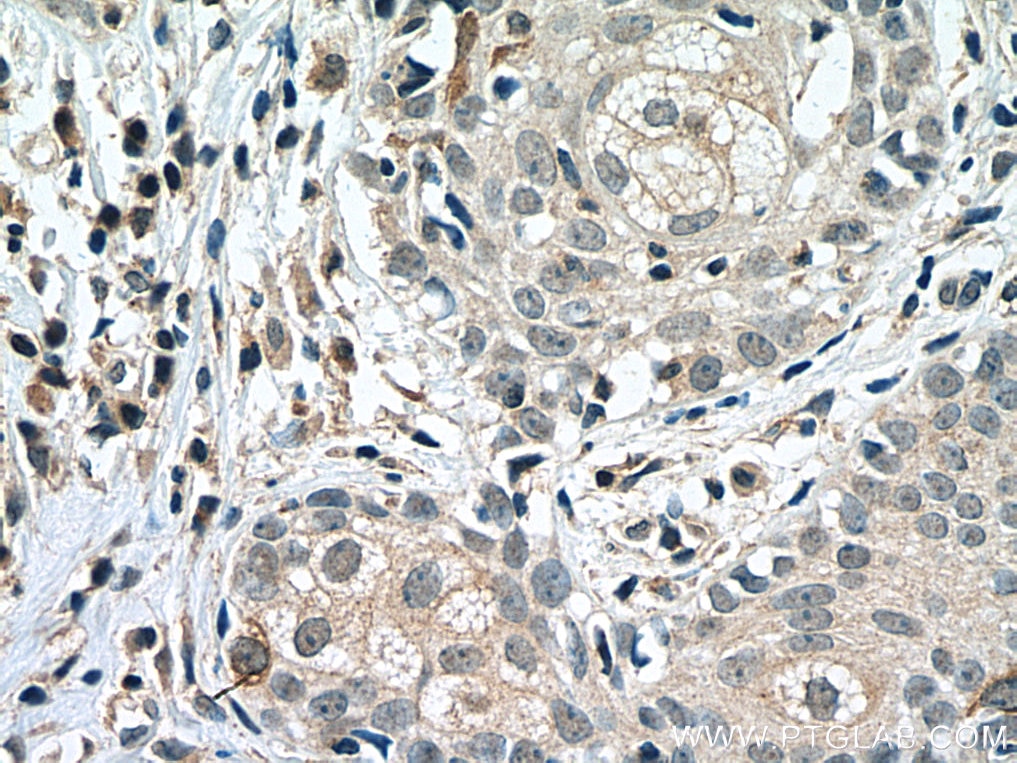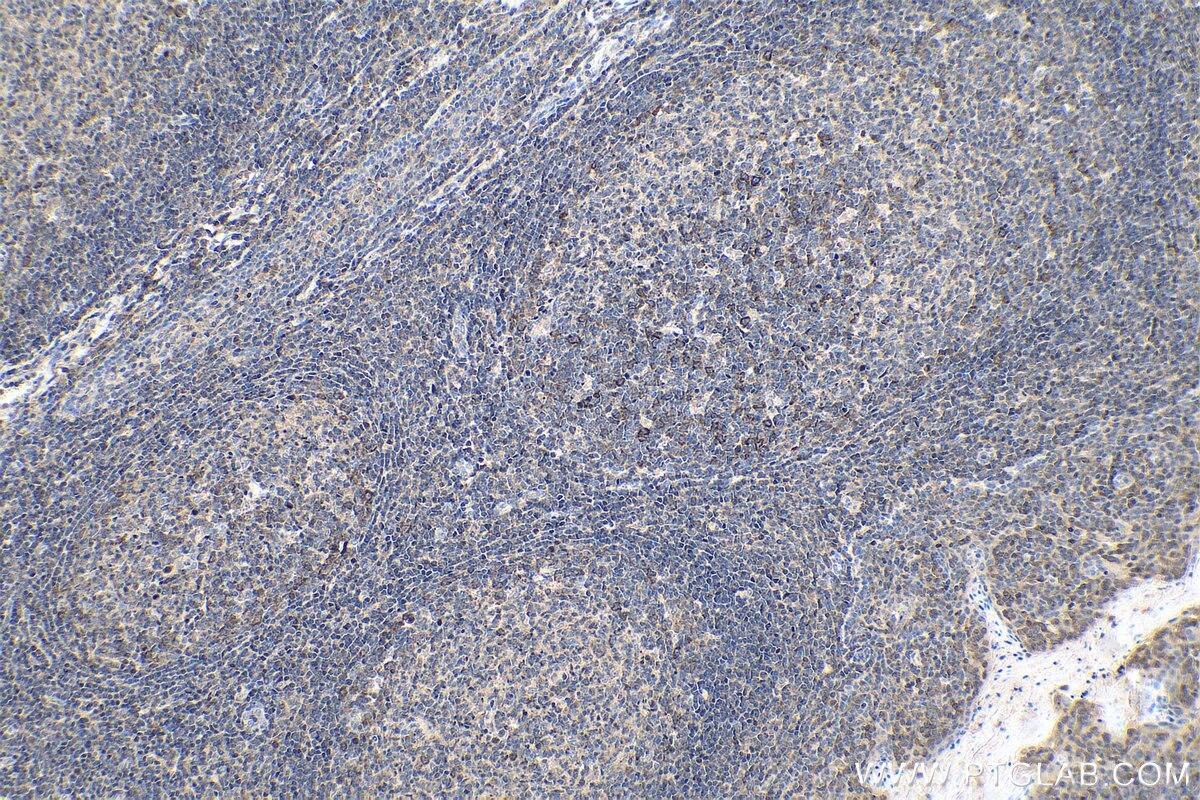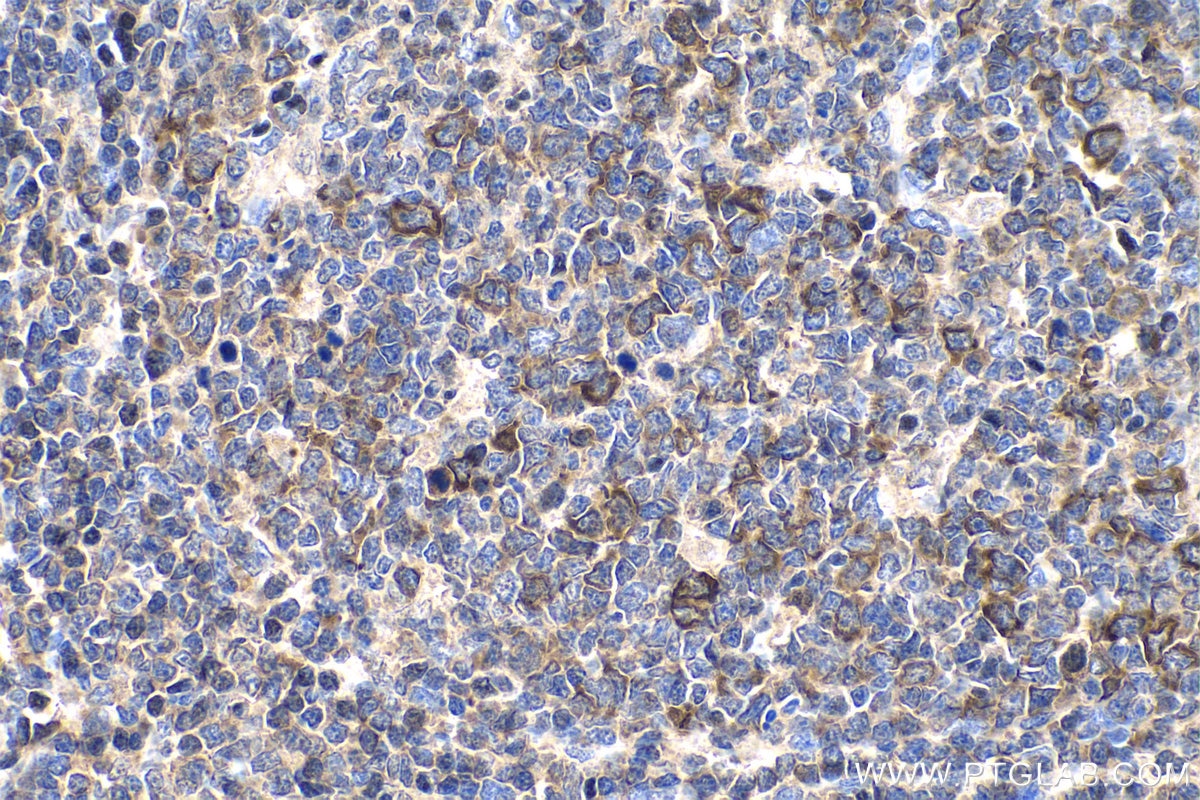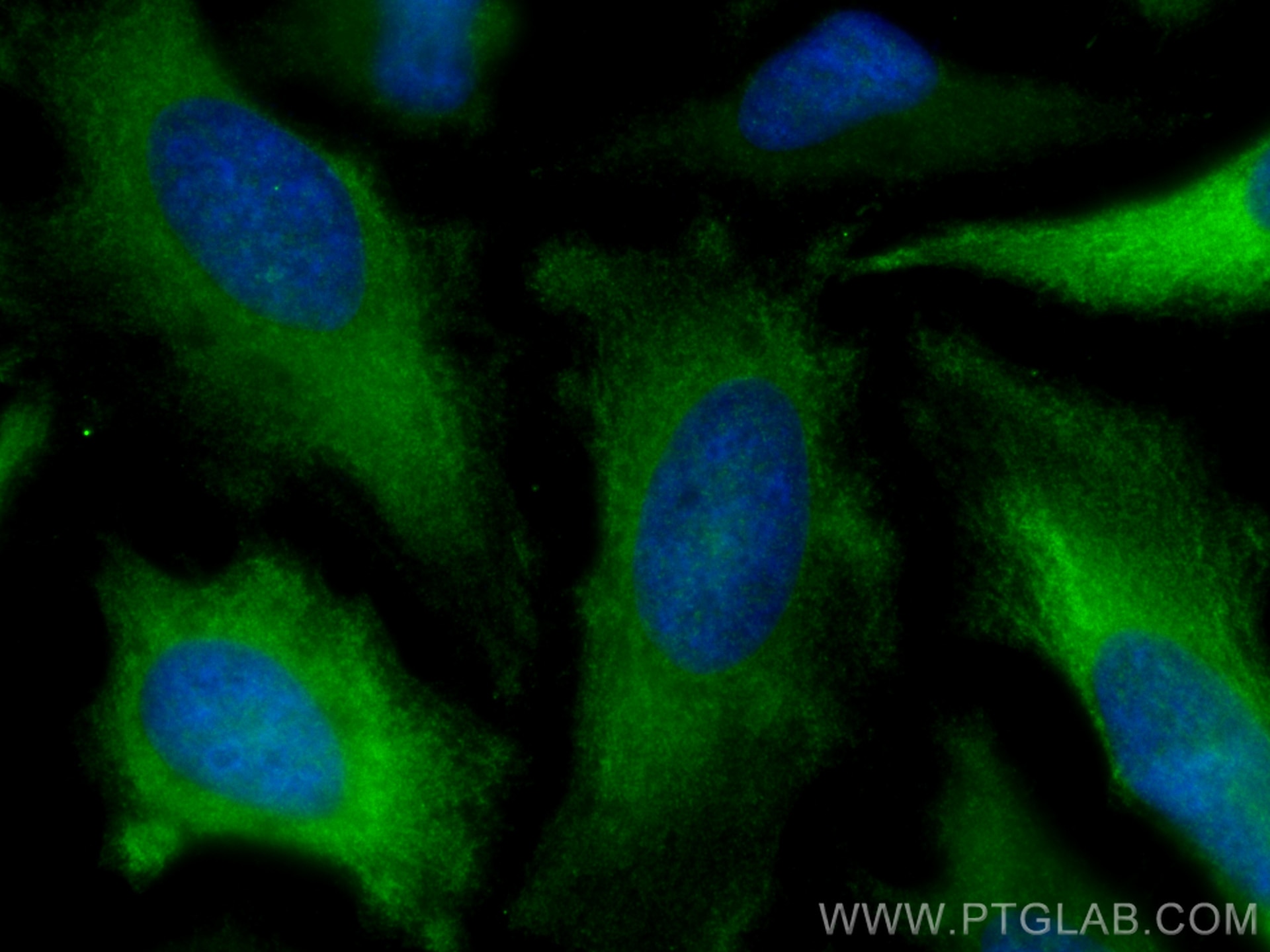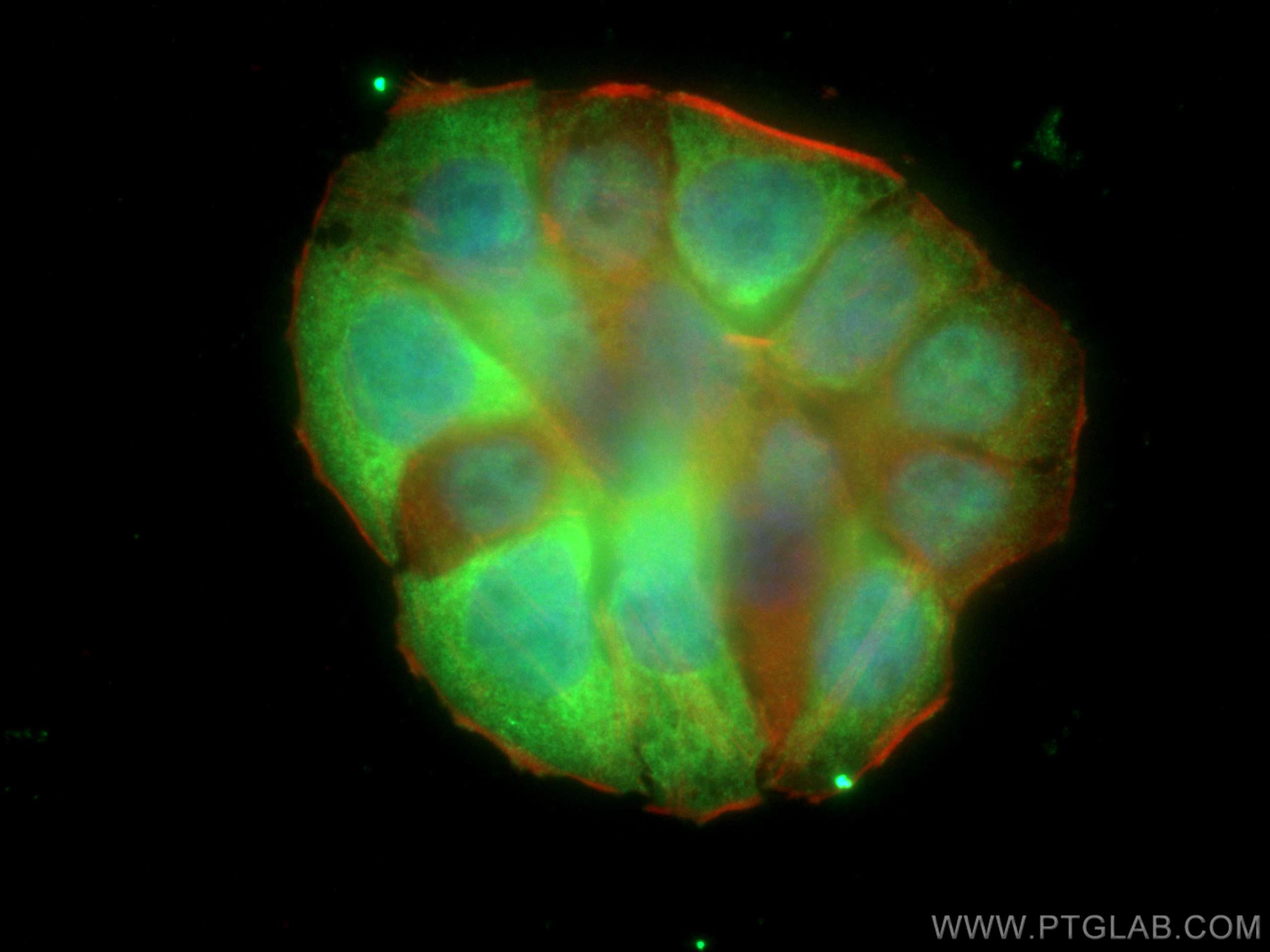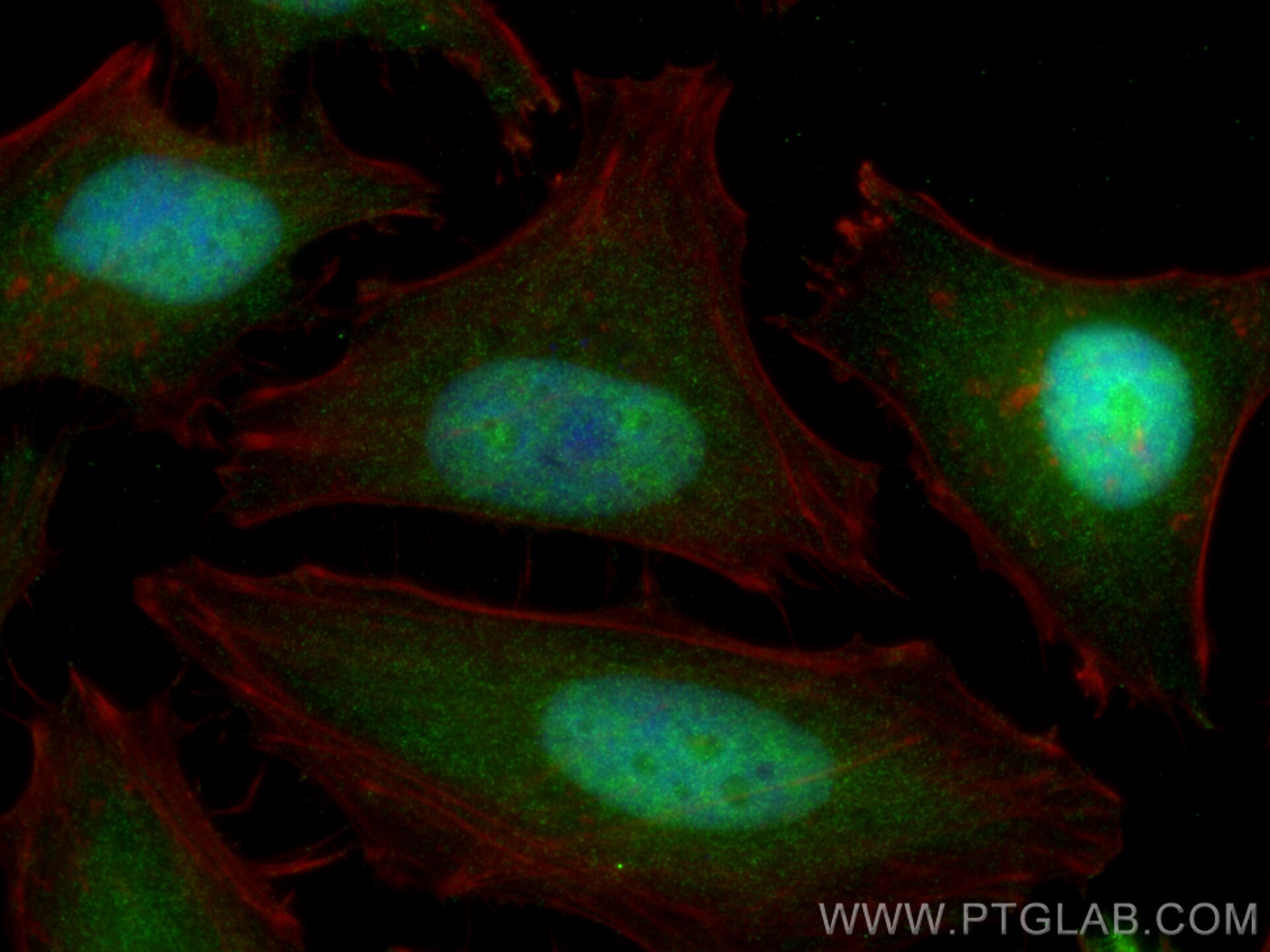- Phare
- Validé par KD/KO
Anticorps Polyclonal de lapin anti-Cyclin B1
Cyclin B1 Polyclonal Antibody for IF, IHC, IP, WB, ELISA
Hôte / Isotype
Lapin / IgG
Réactivité testée
Humain, rat et plus (4)
Applications
WB, IP, IHC, IF, ELISA
Conjugaison
Non conjugué
N° de cat : 28603-1-AP
Synonymes
Galerie de données de validation
Applications testées
| Résultats positifs en WB | cellules HT-29, cellules C6, cellules HeLa, cellules K-562 |
| Résultats positifs en IP | cellules HeLa, |
| Résultats positifs en IHC | tissu de cancer de la peau humain, tissu d'amygdalite humain il est suggéré de démasquer l'antigène avec un tampon de TE buffer pH 9.0; (*) À défaut, 'le démasquage de l'antigène peut être 'effectué avec un tampon citrate pH 6,0. |
| Résultats positifs en IF | cellules HeLa, cellules HT-29 |
Dilution recommandée
| Application | Dilution |
|---|---|
| Western Blot (WB) | WB : 1:1000-1:8000 |
| Immunoprécipitation (IP) | IP : 0.5-4.0 ug for 1.0-3.0 mg of total protein lysate |
| Immunohistochimie (IHC) | IHC : 1:200-1:800 |
| Immunofluorescence (IF) | IF : 1:200-1:800 |
| It is recommended that this reagent should be titrated in each testing system to obtain optimal results. | |
| Sample-dependent, check data in validation data gallery | |
Applications publiées
| KD/KO | See 1 publications below |
| WB | See 53 publications below |
| IHC | See 4 publications below |
| IF | See 1 publications below |
Informations sur le produit
28603-1-AP cible Cyclin B1 dans les applications de WB, IP, IHC, IF, ELISA et montre une réactivité avec des échantillons Humain, rat
| Réactivité | Humain, rat |
| Réactivité citée | rat, bovin, canin, Humain, poulet, souris |
| Hôte / Isotype | Lapin / IgG |
| Clonalité | Polyclonal |
| Type | Anticorps |
| Immunogène | Cyclin B1 Protéine recombinante Ag29426 |
| Nom complet | cyclin B1 |
| Masse moléculaire calculée | 48 kDa |
| Poids moléculaire observé | 55-60 kDa |
| Numéro d’acquisition GenBank | BC006510 |
| Symbole du gène | CCNB1 |
| Identification du gène (NCBI) | 891 |
| Conjugaison | Non conjugué |
| Forme | Liquide |
| Méthode de purification | Purification par affinité contre l'antigène |
| Tampon de stockage | PBS avec azoture de sodium à 0,02 % et glycérol à 50 % pH 7,3 |
| Conditions de stockage | Stocker à -20°C. Stable pendant un an après l'expédition. L'aliquotage n'est pas nécessaire pour le stockage à -20oC Les 20ul contiennent 0,1% de BSA. |
Informations générales
Cyclin B1 is a regulatory protein involved in mitosis. The gene product complexes with p34(cdc2) to form the maturation-promoting factor (MPF). Two alternative transcripts have been found, a constitutively expressed transcript and a cell cycle-regulated transcript, that is expressed predominantly during G2/M phase of the cell cycle. The different transcripts result from the use of alternate transcription initiation sites. The antibody is specific to CCNB1. We got a 55-60 kDa band in western blotting maybe due to phosphorylation.
Protocole
| Product Specific Protocols | |
|---|---|
| WB protocol for Cyclin B1 antibody 28603-1-AP | Download protocol |
| IHC protocol for Cyclin B1 antibody 28603-1-AP | Download protocol |
| IF protocol for Cyclin B1 antibody 28603-1-AP | Download protocol |
| IP protocol for Cyclin B1 antibody 28603-1-AP | Download protocol |
| Standard Protocols | |
|---|---|
| Click here to view our Standard Protocols |
Publications
| Species | Application | Title |
|---|---|---|
Clin Transl Med Artemisitene suppresses rheumatoid arthritis progression via modulating METTL3‐mediated N6‐methyladenosine modification of ICAM2 mRNA in fibroblast‐like synoviocytes | ||
Cancer Lett Trim21-mediated HIF-1α degradation attenuates aerobic glycolysis to inhibit renal cancer tumorigenesis and metastasis. | ||
Mol Oncol Interaction between membranous EBP50 and myosin 9 as a favorable prognostic factor in ovarian clear cell carcinoma | ||
Life Sci Periplocin inhibits hepatocellular carcinoma progression and reduces the recruitment of MDSCs through AKT/NF-κB pathway | ||
Am J Physiol Lung Cell Mol Physiol KLF5 mediates vascular remodeling via HIF-1α in hypoxic pulmonary hypertension | ||
Cancer Cell Int Inhibition of hyaluronic acid degradation pathway suppresses glioma progression by inducing apoptosis and cell cycle arrest |
